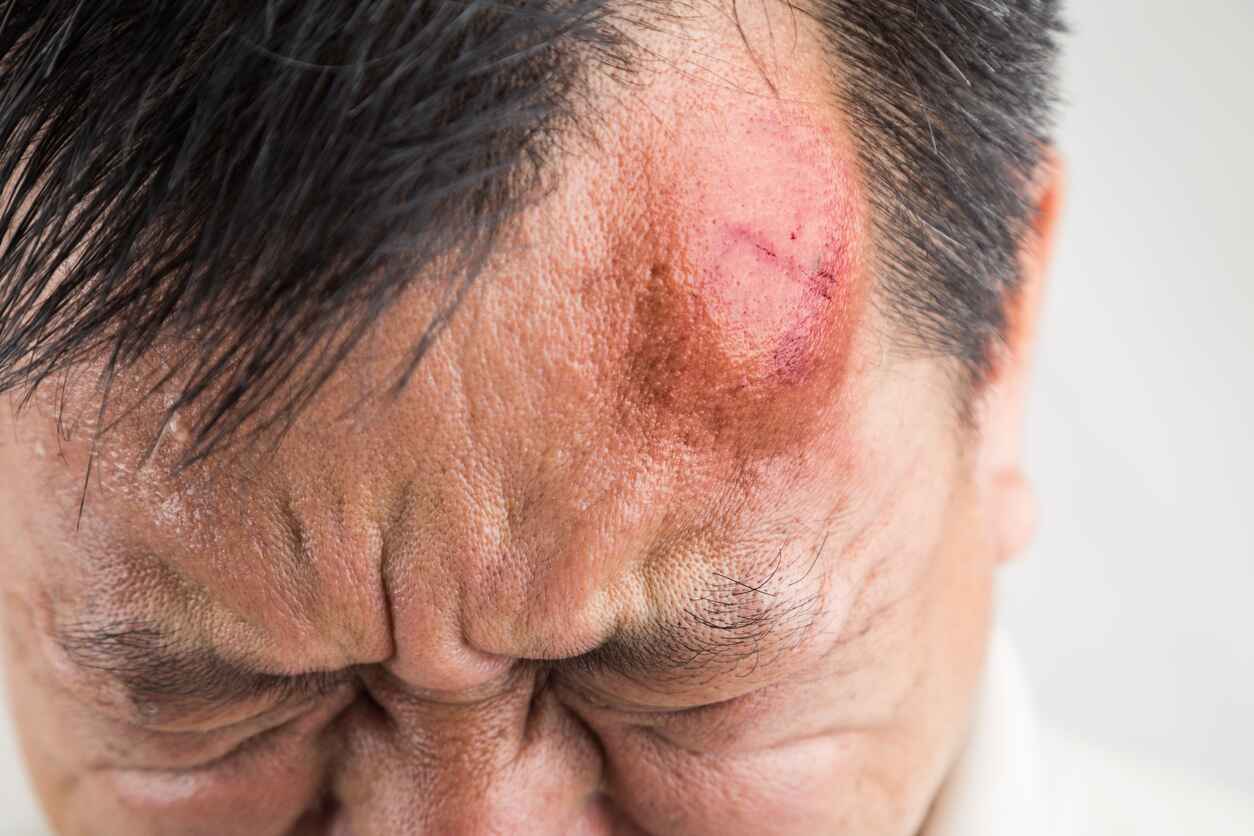

Why Does The Lump On My Head Hurt When I Press It?
- There are various causes of painful head lumps. Some severe conditions require immediate medical attention, while others can resolve within a few days.
- Several simple treatments are available to reduce localised swelling if you have accidentally bumped your head.
- You should seek medical help if you experience any symptoms of a severe head or brain injury, such as memory loss, slurred speech, or seizures.
What Causes Painful Lumps On The Head?
If you notice soreness when pressing or touching lumps on your head, you must consider seeking immediate medical attention.
Nevertheless, it's essential to understand that not all head lumps signal severe medical issues. Identifying the specific symptoms that point to conditions needing medical intervention can help you receive the most appropriate treatment for your situation.
Serious Causes Of Head Lumps
Here are some more serious underlying causes that could result in a painful lump on your head when touched or pressed.
A Scalp Injury
Head injuries can result from incidents like falls, blows to the head, or accidental head impacts.
The symptoms of a head injury can vary in intensity based on the seriousness of the trauma.
If you've experienced any of the following symptoms following one of the events mentioned above, it could indicate a mild head injury:
- Severe headache
- Ringing in the ears
- Blurred or double vision
- Disrupted sleep patterns
- Dizziness
- Confusion or memory lapses
- Nausea and vomiting
On the other hand, if you observe any of the subsequent symptoms, it may suggest a severe head injury:
- Visual disturbances, such as dilated pupils or impaired vision
- Difficulty in speaking or slurred speech
- Loss of consciousness
- Seizures
- Impaired coordination and balance
- Persistent and unrelenting headaches and vomiting
- Neck pain and stiffness
A Brain Injury
Brain injuries can sometimes lead to the development of head lumps, which can vary in terms of their temporary or permanent nature and the extent of resulting impairments, ranging from mild to severe.
These injuries can be triggered by various factors, such as:
- Stroke
- Brain tumours
- Infections like meningitis
- Oxygen deprivation
Neurological conditions such as Parkinson's disease
Additionally, traumatic brain injuries (TBIs) can also cause head lumps. TBIs occur when the head experiences a sudden jolt or impact, often stemming from events like car accidents, sports-related injuries, or acts of violence. These injuries typically result in intense pain.
Brain injuries demand immediate medical attention, and treatment approaches may encompass prescription medications or even surgical interventions.
If you suspect a brain injury, it is crucial to consult a healthcare professional promptly.
Less Serious Causes Of Head Lumps
Here are some common causes of painful head bumps that are generally not severe and may not necessarily demand immediate medical attention.
An Ingrown Hair
Painful head bumps can arise from ingrown hairs, which occur when a hair follicle on your head gets trapped beneath the skin's surface.
When your hair grows, it may attempt to curl around or re-enter the skin, leading to potential follicle infections.
Infections within hair follicles can result in painful, pus-filled bumps on your head, which may resemble and feel like pimple-like bumps.
How Can I Treat Infected Hair Follicles From Ingrown Hair?
The treatment for infected hair follicles due to ingrown hair on your head depends on the infection's severity and can include:
- Gentle exfoliation
- Warm compresses
- Topical creams
- Steroid injections
Epidermoid Cysts
Epidermoid cysts, also called sebaceous cysts, are benign growths that can form beneath the skin on the head. They can occasionally have a hereditary component.
These cysts typically comprise a protein called keratin and tend to develop gradually beneath the skin.
In most cases, epidermoid cysts do not cause discomfort. However, if they become painful or sore, it could be a sign of infection, necessitating medical consultation and treatment.
Epidermoid Cysts
Pilar cysts, also known as trichilemmal cysts, form within the hair follicles on the head and can lead to the development of one or multiple painful bumps.
Symptoms of pilar cysts encompass:
- Pain
- Redness on the scalp
- Swelling
- Tenderness to touch
The primary treatment for this condition typically involves surgical removal of the cyst, mainly if they are unwanted for cosmetic reasons.
Less Common Causes Of Head Bumps
In addition to the primary causes of head lumps mentioned earlier, here are some other potential factors:
Scalp Hematoma: This refers to the accumulation of blood between the scalp and the skull.
Basal Cell Carcinoma: This is a form of skin cancer that originates in the deepest skin layer, often affecting sun-exposed areas of the body.
Head And Neck Cancers: These abnormal cell growths or cancers develop within the head and neck tissues and organs.
Insect Bites: When bitten on the scalp, insect bites can lead to small bumps on the head, which typically resolve within a few weeks.
When To See A Doctor For A Bump On The Head
Seek immediate medical attention if you sustain a severe head injury, as some head and brain injuries can be life-threatening and, in rare instances, fatal.
In such cases, a doctor may order a CT scan to assess for potential brain damage before providing a definitive diagnosis.
For assistance in cases of head injuries or concerns, you can seek help from Mobi Doctor.



 (1) (1).jpg)

Comments